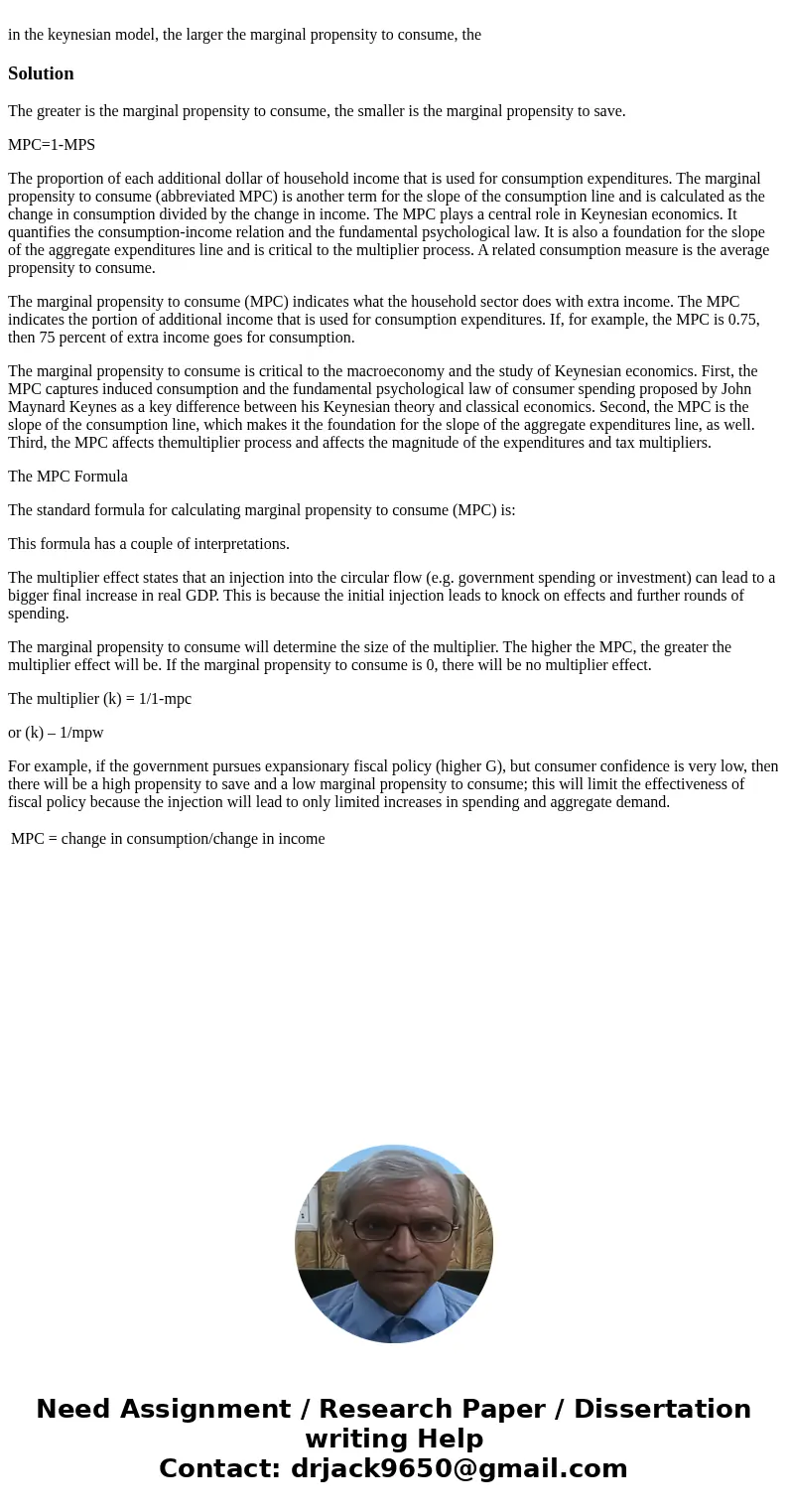in the keynesian model the larger the marginal propensity to
in the keynesian model, the larger the marginal propensity to consume, the
Solution
The greater is the marginal propensity to consume, the smaller is the marginal propensity to save.
MPC=1-MPS
The proportion of each additional dollar of household income that is used for consumption expenditures. The marginal propensity to consume (abbreviated MPC) is another term for the slope of the consumption line and is calculated as the change in consumption divided by the change in income. The MPC plays a central role in Keynesian economics. It quantifies the consumption-income relation and the fundamental psychological law. It is also a foundation for the slope of the aggregate expenditures line and is critical to the multiplier process. A related consumption measure is the average propensity to consume.
The marginal propensity to consume (MPC) indicates what the household sector does with extra income. The MPC indicates the portion of additional income that is used for consumption expenditures. If, for example, the MPC is 0.75, then 75 percent of extra income goes for consumption.
The marginal propensity to consume is critical to the macroeconomy and the study of Keynesian economics. First, the MPC captures induced consumption and the fundamental psychological law of consumer spending proposed by John Maynard Keynes as a key difference between his Keynesian theory and classical economics. Second, the MPC is the slope of the consumption line, which makes it the foundation for the slope of the aggregate expenditures line, as well. Third, the MPC affects themultiplier process and affects the magnitude of the expenditures and tax multipliers.
The MPC Formula
The standard formula for calculating marginal propensity to consume (MPC) is:
This formula has a couple of interpretations.
The multiplier effect states that an injection into the circular flow (e.g. government spending or investment) can lead to a bigger final increase in real GDP. This is because the initial injection leads to knock on effects and further rounds of spending.
The marginal propensity to consume will determine the size of the multiplier. The higher the MPC, the greater the multiplier effect will be. If the marginal propensity to consume is 0, there will be no multiplier effect.
The multiplier (k) = 1/1-mpc
or (k) – 1/mpw
For example, if the government pursues expansionary fiscal policy (higher G), but consumer confidence is very low, then there will be a high propensity to save and a low marginal propensity to consume; this will limit the effectiveness of fiscal policy because the injection will lead to only limited increases in spending and aggregate demand.
| MPC | = | change in consumption/change in income |

 Homework Sourse
Homework Sourse